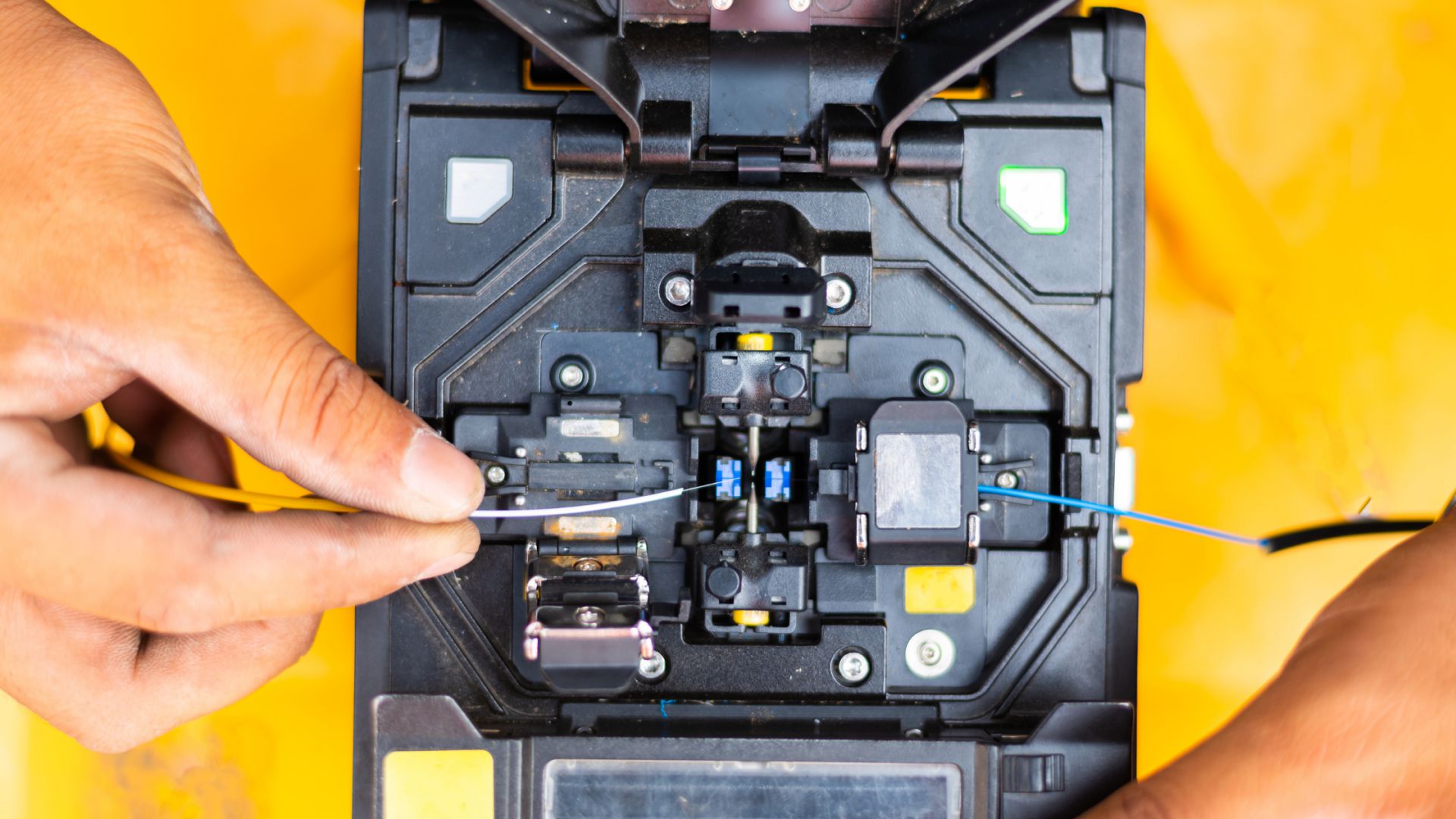
Fiber optic cabling is not a new technology, though it is being used in many new-school applications and across a smorgasbord of industries. Fibre optic communication systems are becoming the bedrock of modern telecommunications. Increased demand for fiber optic cabling systems has also led to an increase in demand for fiber optic splicing services.
But, why exactly does this matter? What is it about fiber optic splicing that makes it such a viable, needed service?
In this blog, we’re first going to give you an introduction to fiber optic splicing. We will then detail the difference between single-mode and multi-mode fiber as well as the key differences between mechanical and fusion splicing. Finally, we will explain why this service is so essential to the continued prevalence of fiber optics in the market.
Introduction to Fiber Optic Splicing
Fiber optic splicing is the process of fusing two separate fiber cables. This is typically the best solution for connecting to an existing cabling system that cannot reach it’s intended destination, or when a cable has been accidentally severed or otherwise damaged.

While there are other methods for connecting separate cables, such as ‘termination’ or ‘connectorization’, fiber optic splicing is often preferable because it undergoes less inherent loss of light in the process of connection. Splicing allows us to add-on to existing systems during an upgrade, or repair a damaged cable connection that is interrupting service.
Cabling Considerations
When it comes to fiber optic splicing, it’s important to know the points of differentiation between single-mode and multi-mode cabling.
Single-mode cable has a much smaller core size, making it a better option for transmissions over longer distances. Single-mode cabling only allows one mode of light to be transmitted, and that light is carried directly down the fiber. This simplification of light transmission allows the signal to travel successfully over long distances. There are few, if any, distance limitations to single-mode cabling.
Multi-mode cabling, on the other hand, has a core size that is five to six times larger than single-mode. This differentiation allows for greater light-gathering capacity, which can allow for much greater bandwidth. The tradeoff here is that multi-mode cabling can only travel over short distances, primarily because many different kinds of light can be housed and travel within one single cable.

Splicing Types Explained
There are two distinct ways to carry out fiber optic splicing.
Mechanical splicing is the process of positioning and holding two fiber ends in precise alignment, which then allows light to pass from one fiber to another. Mechanical splicing devices are, simply put, cable alignment devices.
Fusion splicing is achieved by using a machine that precisely aligns two fiber ends, which are fused using some type of heat or electric arc. The continuous connection that is formed allows for very low loss of light compared to mechanical splicing. It is essentially a more precise splicing method.
When it comes to economics, mechanical splicing is generally cheaper since it requires a lower initial investment. Conversely, fusion splicing requires a higher initial investment but the actual cost-per-splice is generally lower. Which one you choose depends largely on three factors:
- Type: Fusion splicing is used primarily for single-mode fiber whereas mechanical splicing can work for both types of cabling.
- Investment: As mentioned, fusion cabling involves a greater financial investment.
- Precision: The more precise the needed alignment, the more high-tec the splicer needs to be. Because fusion splicing allows for less light loss, it can often be the only viable option for certain communication needs that require such precision.
Why Splicing Matters

Simply put, splicing matters because it allows for the economical repair of fiber optic cabling systems. Without it, you would need to haul in all-new cables when one is accidentally severed or design an entirely new system when communication upgrades are needed. Splicing allows for the timely and economical setup and maintenance of cabling that is essential to today’s complex communication systems.
Qualified technicians are also imperative to this service, as the splicing process requires patience, skill and attention to detail. Even the most advanced fiber optic splicing machinery becomes obsolete without properly trained professionals to operate them. These professionals are paramount to the continued proliferation of mainstream communication systems.
Conclusion
Modern technology requires modern expertise. Fiber optic cabling has become a deeply entrenched facet of communications technology, reinforcing the need for adequate fiber optic splicing devices and professionals that can use them effectively. Through the service of fiber optic splicing, our communications can be economically repaired and upgraded without the potential stress of a brand new cabling system.
Earth Communications is dedicated to staying at the forefront of the latest communication technologies and the many innovations in this field. We’re equipped to handle all of your fiber optic splicing needs, and can employ the right devices to get the job done right. As always, we will evaluate your unique needs and always pitch to you the safest and most cost-effective way to keep your communication seamless.
